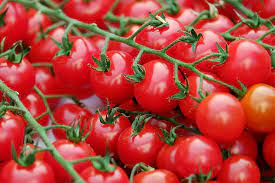
Firstly, introducing Auscrops, a wonderful market vending company bridging farmers and customers together through market vendors. Click here to find out more about How to Stake Tomatoes as well fruit and vegetable offers.
How to Stake Tomatoes
Tomatoes are widely regarded as one of the easiest and most rewarding crops to grow. They thrive in a variety of conditions and can be grown in virtually any garden, big or small. Once your tomato plants have started to grow, however, they will require some support to ensure that they stay healthy and productive. In this blog post, we’ll teach you everything you need to know about staking tomatoes, including why you should stake them, how to choose the best staking method for your plants, and when to stake them.
Why Stake Tomatoes?
Staking is an essential part of growing, as it helps to keep the plants upright and prevents them from falling over under the weight of their fruits. This method also enjoy better air circulation, which can prevent disease and pests from taking hold in your garden. Moreover, this method allows the tomato plants to receive more sunlight, which increases the size and quality of the fruit they produce. That’s why it’s crucial to stake your plants before their fruiting season starts.
How to Stake Tomatoes
The best way to stake will depend largely on your personal preferences and the type of plants you are growing. Some popular methods of staking include the single-stake method, the top wire method, and the cage method. The single-stake method involves driving a single wooden or metal stake into the ground next to each tomato plant and tying the plant to the stake with soft twine or gardening tape. The top wire method involves suspending a wire or string over the tomato plants, and tying the plants to it at regular intervals, while the cage method involves surrounding tomato plants with a circular wire cage.
When to Stake Tomatoes
It’s best to stake while they are still seedlings to avoid damaging the plant’s root system later on. Once your tomato seedlings are about six inches tall, drive a wooden or metal stake into the ground right next to the plant, being careful not to damage its roots. Use a gardening tie to attach the plant’s stem to the stake, at a point just above the first true leaf.
After Care of Staked Tomato Plants
Once you have staked your tomato plants, there are a few things that you can do to ensure they remain healthy and productive throughout the growing season. It is important to monitor the plant’s growth and development regularly, and adjust the stake height accordingly. Moreover, pruning your tomato plant is a good idea to prevent them from becoming bushy. Keeping fruit production focused and easier to manage. Pruning at regular intervals will encourage strong and healthy growth. As well increase the size and number of the fruits that each plant produces. Lastly, regularly water and fertilize your tomato plants, as staked plants require more water and nutrients than unstaked ones.
Conclusion:
Staking tomato is a relatively simple and easy process that can do wonders for your yield. By providing your plants with the support and structure they need to grow healthy and strong. You can marvellous harvest of fresh, ripe tomatoes all season long. So dig out some stakes, twine or other materials, find a tomato plant that looks sturdy but a bit wobbly. Set it up in the spot you desire and tie the plant loosely to the stake you placed.
Click here to read similar articles.
 Français
Français 











